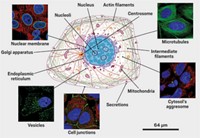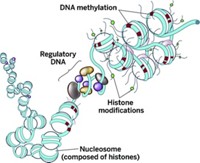Advertisement
Grab your lab coat. Let's get started
Welcome!
Welcome!
Create an account below to get 6 C&EN articles per month, receive newsletters and more - all free.
It seems this is your first time logging in online. Please enter the following information to continue.
As an ACS member you automatically get access to this site. All we need is few more details to create your reading experience.
Not you? Sign in with a different account.
Not you? Sign in with a different account.
ERROR 1
ERROR 1
ERROR 2
ERROR 2
ERROR 2
ERROR 2
ERROR 2
Password and Confirm password must match.
If you have an ACS member number, please enter it here so we can link this account to your membership. (optional)
ERROR 2
ACS values your privacy. By submitting your information, you are gaining access to C&EN and subscribing to our weekly newsletter. We use the information you provide to make your reading experience better, and we will never sell your data to third party members.
Biological Chemistry
An atlas of the body
Human biomolecular atlas project reports on how cell types fit together in 3D
by Laurel Oldach
July 27, 2023
| A version of this story appeared in
Volume 101, Issue 25

To understand biomolecules in context, researchers need to know where they are expressed and what they do in healthy tissues. But with roughly 37 trillion cells in a healthy human body, that knowledge can be hard to come by. One of numerous projects tackling this subject, the Human BioMolecular Atlas Program (HuBMAP), released its first tranche of results in July.
The hundreds of researchers in the HuBMAP consortium aim to map out the body at single-cell resolution by conducting spatial surveys of the biomolecules in every organ. In three articles published in Nature, they report on such surveys in the intestine, kidney, skin and placenta-endometrium junction.
Researchers used spatial transcriptomics, proteomics, chromatin accessibility sequencing, multiplexed immunofluorescence and other techniques to identify what they term neighborhoods within each tissue, where different types of cells live together. In many cases, they could collect several types of data from the same individual cell.
Additional articles in other Nature family journals describe new imaging techniques the consortium is developing, as well as the team’s approach to organizing and presenting terabytes of experimental data.
HuBMAP investigators collaborate with similar consortia such as the Human Cell Atlas, and the Brain Research Through Advancing Innovative Neurotechnologies (BRAIN) Initiative but are more focused on how single cells fit into three-dimensional tissues, they explained in a press conference.
As the team accumulates more data, they hope to construct a set of anatomical coordinates, “like a latitude-longitude system for the healthy human body,” says Katy Börner of Indiana University, one of HuBMAP’s principal investigators. They also intend to collect more data on how aging alters healthy tissue.




Join the conversation
Contact the reporter
Submit a Letter to the Editor for publication
Engage with us on Twitter